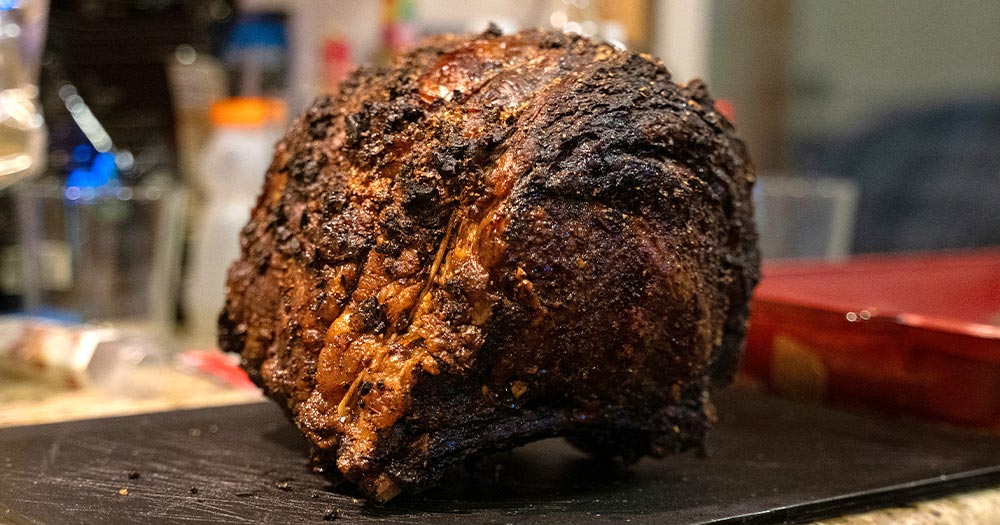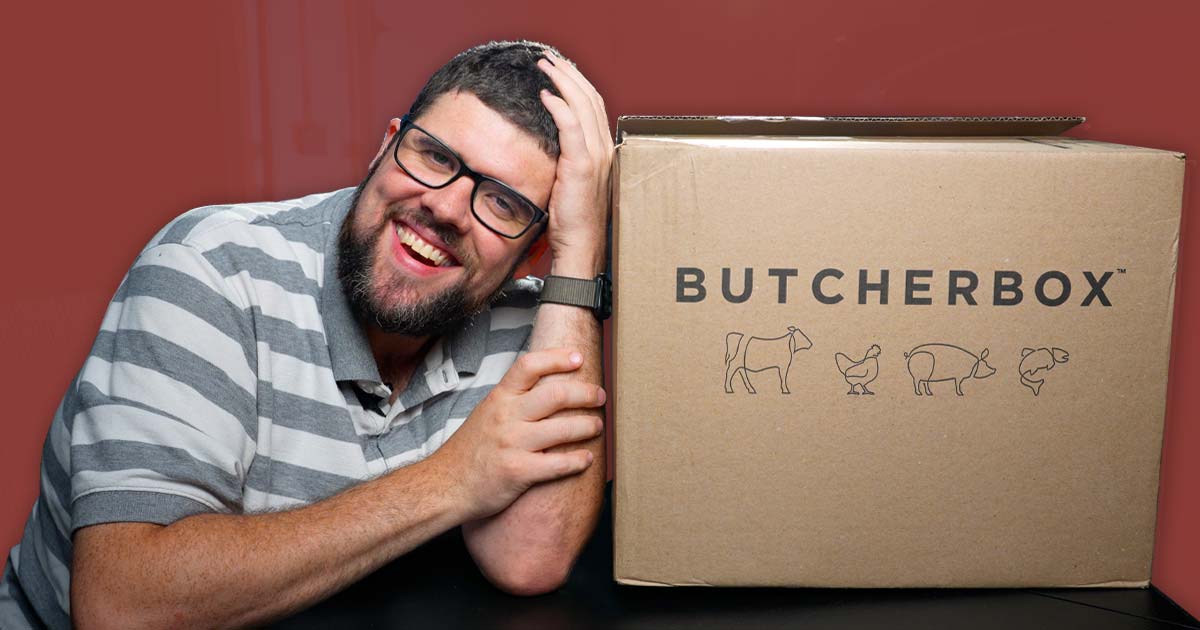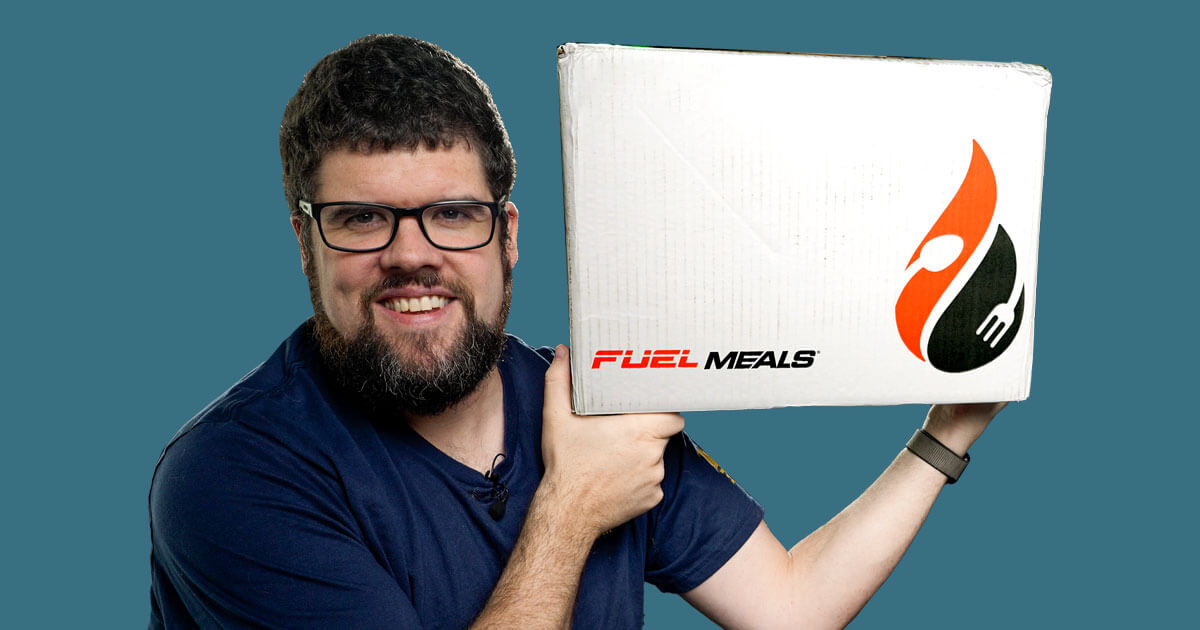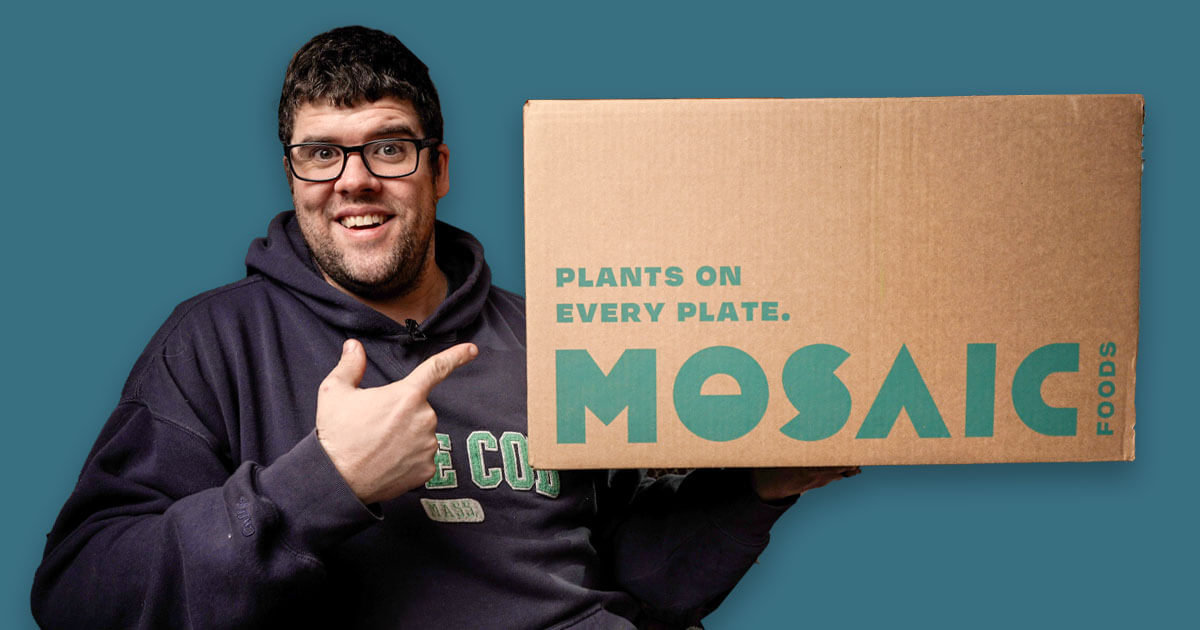Table of Contents
The holiday season is a time for celebrating with loved ones and indulging in special, festive meals. As we gather around the table, there’s no dish more iconic than a beautifully prepared Holiday Prime Rib. In this blog, we’ll not only dive into the delicious world of Prime Rib but also explore the importance of supporting small farms and the health benefits of choosing high-quality, grass-fed, and grass-finished beef. We’ll also touch upon some fantastic farms and online platforms like Heart Stone Farm, ButcherBox, Crowd Cow, American Grazed Beef, Grass Roots Farmers Co-Op, and White Oak Pastures.
The Journey to Better Health and Clean Eating
Before we embark on this culinary adventure, let me share a personal aspect of my journey. Having been diagnosed with Hypertrophic Obstructive Cardiomyopathy (HOCM), a condition that affects the heart’s ability to pump blood effectively, and having undergone weight loss surgery (VSG), I’ve realized the vital importance of clean eating and maintaining a healthy lifestyle. Living in Vermont, surrounded by the serenity of nature, has further reinforced my commitment to nourishing my body with the best possible foods.
While red meat isn’t an everyday indulgence for anyone, it can be a part of a balanced diet when sourced from the right places. Let’s delve into why supporting small farms and choosing high-quality, grass-fed and grass-finished beef is essential not just for me but for all of us.
The Health Benefits of Grass-Fed and Grass-Finished Beef
- No Antibiotics or Hormones: Small farms often prioritize the well-being of their animals and do not rely on antibiotics or growth hormones. Consuming meat free of these additives reduces the risk of ingesting potentially harmful substances.
- Nutrient-Rich Diet: Grass-fed and grass-finished cattle graze on a diet of natural grasses, which results in beef that is richer in essential nutrients such as Omega-3 fatty acids, vitamins, and minerals. These nutrients contribute to better overall health.
- Lower Fat Content: Grass-fed and grass-finished beef typically contains less saturated fat than conventionally raised beef. This healthier fat profile can help reduce the risk of heart disease and other health issues.
- Reduced Risk of E. coli: Grass-fed cattle are less prone to carrying E. coli bacteria, which can be transmitted to humans through consumption of undercooked meat. Choosing grass-fed beef minimizes this risk.
Supporting Small Farms and Sustainable Agriculture
Now, let’s shift our focus to the importance of supporting small farms. Small-scale farming practices align with sustainable agriculture principles, contributing to healthier ecosystems and local economies. When you buy from small farms like Heart Stone Farm, you’re not just purchasing food; you’re investing in a more sustainable future.
Heart Stone Farm is a prime example of a small, family-owned farm dedicated to raising high-quality, grass-fed and grass-finished beef. By choosing to support small farms like this one, you’re helping preserve open spaces, protect biodiversity, and promote responsible land management practices.
Cooking Your Holiday Prime Rib
With your high-quality grass-fed and grass-finished Prime Rib in hand, it’s time to explore the various cooking methods that can elevate this holiday classic to new heights.
Smoking
Smoking your Prime Rib adds a delightful smoky flavor and produces juicy, tender meat. The choice of wood chips for smoking is crucial to achieving the desired aroma and taste. Here are some recommended wood chips and charcoal brands to enhance your smoking experience:
Wood Chips:
- Hickory: Hickory wood chips impart a strong, robust flavor that pairs exceptionally well with beef. Its rich and smoky profile complements the natural taste of Prime Rib beautifully.
- Oak: Oak wood chips offer a milder, yet still distinct smokiness that allows the beef’s flavors to shine through. It’s an excellent choice for those who prefer a more subtle smoky note.
- Cherry: Cherry wood chips provide a sweet and fruity undertone to your smoked Prime Rib. This choice can add a unique and enticing flavor profile that elevates your dish.
Charcoal Brands:
- Kingsford: Kingsford charcoal is a popular choice among grill enthusiasts. It’s known for its consistent heat and dependable burn, making it suitable for long smoking sessions.
- Kamado Joe: Kamado Joe charcoal is another trusted brand that offers high-quality briquettes and lump charcoal. It’s often favored for its clean-burning properties and ability to maintain temperature.
- Royal Oak: Royal Oak produces natural hardwood lump charcoal, which is prized for its authentic smoky flavor. It’s a great option for enhancing the smoke profile of your Prime Rib.
When smoking your Prime Rib, remember to maintain a low and slow temperature, typically around 225°F to 250°F (107°C to 121°C). This slow-cooking process allows the smoky aroma to infuse the meat while keeping it tender and moist. Using the right wood chips and charcoal ensures that you achieve that perfect smoky finish that will have your guests eagerly anticipating each mouthwatering bite.
Baking or Roasting:
Roasting your Prime Rib in the oven is a classic and reliable method that ensures even cooking and a beautifully browned exterior. Here’s how to do it:
- Preparation: Start by removing the Prime Rib from the refrigerator and allowing it to come to room temperature for about an hour. This helps ensure even cooking. While it’s resting, preheat your oven to the desired temperature, usually around 325°F to 350°F (163°C to 177°C), depending on your preferred level of doneness.
- Seasoning: For added flavor, consider applying a rub or seasoning blend to your Prime Rib. The key here is to enhance the natural beefy taste without overpowering it. A simple yet effective seasoning can include a mix of kosher salt, freshly ground black pepper, and garlic powder. You can also explore pre-made rubs and blends available at your local grocery store or online retailers. Some popular options include rosemary, thyme, and paprika-based rubs.
- Tying the Rib: It’s a good practice to tie the rib bones to the meat with kitchen twine. This not only helps the roast hold its shape during cooking but also promotes even cooking.
- Roasting: Place the seasoned Prime Rib on a roasting rack in a roasting pan, bone-side down. This setup allows for better air circulation and even cooking. Insert a meat thermometer into the thickest part of the meat, ensuring it doesn’t touch the bone.
- Cooking Time: The cooking time will depend on the size of your Prime Rib and your desired level of doneness. A general guideline is to roast it for about 15-20 minutes per pound (450 grams) for medium-rare. To ensure accuracy, use a meat thermometer. For medium-rare, aim for an internal temperature of 130°F to 135°F (54°C to 57°C).
- Resting: Once the Prime Rib reaches your desired temperature, remove it from the oven and let it rest for about 20-30 minutes. This resting period allows the juices to redistribute, resulting in a moist and tender roast. Cover it loosely with foil during this time.
Smart Tools for Baking:
To achieve precision when baking your Prime Rib, consider using smart cooking tools like the Meater Block or Meater Plus. These wireless meat thermometers connect to your smartphone, allowing you to monitor the internal temperature of your roast remotely. With preset temperature alarms and real-time alerts, you can ensure your Prime Rib reaches the perfect doneness without the need to constantly check the oven.
Additionally, a digital oven thermometer can provide an extra layer of accuracy by confirming that your oven maintains the desired cooking temperature throughout the roasting process. This ensures consistent and even cooking, resulting in a beautifully browned exterior and a perfectly cooked interior.
In conclusion, baking or roasting your Prime Rib in the oven is a time-tested method that delivers excellent results. By using quality seasonings, smart tools for monitoring temperature, and a little patience during the resting period, you’ll create a mouthwatering Prime Rib that’s sure to be the star of your holiday feast.
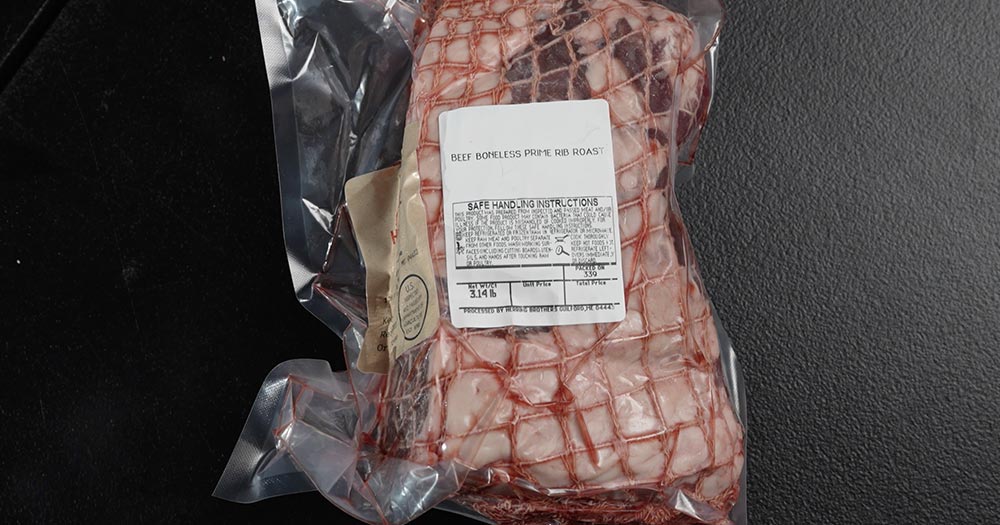
Over an Open Fire:
Cooking your Prime Rib over an open fire is an immersive and adventurous experience that imparts a unique charred flavor to the meat. Here’s how to do it:
- Preparation: Start by preparing your open fire. Whether you’re using a campfire, a dedicated outdoor grill, or a fire pit, ensure that you have a steady source of heat and a safe cooking environment. Clear away any debris or flammable materials from the area.
- Seasoning: Just like with other cooking methods, consider applying a rub or seasoning blend to your Prime Rib to enhance its flavor. Seasonings that work well over an open fire often include a mix of kosher salt, freshly ground black pepper, and herbs like rosemary or thyme. The open flame will add a unique smoky element to the seasoning.
- Equipment: To ensure even cooking and control over the flame, it’s best to use a rotisserie or grill grate designed for open fire cooking. A rotisserie slowly rotates the Prime Rib over the flames, ensuring that all sides cook evenly. If you’re using a grill grate, make sure it’s sturdy and positioned at a proper height above the flames.
- Fire Control: Achieving the right cooking temperature over an open fire can be a bit challenging, but it’s part of the adventure. Adjust the height of your rotisserie or grill grate to control the heat. The ideal cooking temperature for Prime Rib over an open fire is around 325°F to 350°F (163°C to 177°C). You can gauge the heat by holding your hand over the grill grate; if you can comfortably hold it there for 4-5 seconds, it’s at the right temperature.
- Cooking Time: Cooking time over an open fire can vary based on your fire’s heat and the size of your Prime Rib. As a general guideline, plan for about 15-20 minutes per pound (450 grams) for medium-rare. However, like with all cooking methods, use a meat thermometer to ensure precision. Aim for an internal temperature of 130°F to 135°F (54°C to 57°C) for medium-rare.
- Resting: Just as with other cooking methods, let your Prime Rib rest for about 20-30 minutes after cooking. This resting period allows the juices to redistribute, resulting in a juicy and flavorful roast. Cover it loosely with foil during this time.
Embracing the Rustic Charm:
Cooking your Prime Rib over an open fire is not just about the end result; it’s about the experience. Embrace the rustic charm of open flame cooking, the crackling of the fire, and the aromatic smokiness that fills the air. It’s an opportunity to connect with nature and relish in the primal joy of preparing food over an open flame.
Whether you’re camping in the great outdoors or enjoying a backyard barbecue, cooking Prime Rib over an open fire is sure to be a memorable and delicious adventure. So, gather around the fire with friends and family, enjoy the ambiance, and savor the unique flavor of your open flame-cooked Prime Rib.
Charcoal Grill vs. Gas Grill:
When using a grill, the choice between charcoal and gas is a matter of personal preference. Charcoal imparts a smokier flavor, while gas grills offer precise temperature control. Both can produce outstanding results with the right technique. Here’s a closer look at these options and the top grill brands to consider:
Charcoal Grill:
- Preparation: Start by preparing your charcoal grill. Light the charcoal and allow it to ash over. Once the charcoal is ready, spread it evenly across the bottom of the grill.
- Seasoning: Season your Prime Rib with your chosen rub or seasoning blend. Ensure the meat is at room temperature for even cooking.
- Temperature: For a charcoal grill, you’ll want to maintain a temperature of around 325°F to 350°F (163°C to 177°C). Use the vents on the grill to regulate the airflow and control the temperature.
- Direct and Indirect Cooking: Create different zones on the grill for direct and indirect cooking. Sear the Prime Rib over high heat on one side for a few minutes per side to develop a flavorful crust. Then, move it to the cooler, indirect heat side of the grill to finish cooking.
- Internal Temperature: Use a meat thermometer to monitor the internal temperature of the Prime Rib. For medium-rare, aim for an internal temperature of 130°F to 135°F (54°C to 57°C).
- Resting: Once the Prime Rib reaches the desired internal temperature, remove it from the grill and let it rest for about 20-30 minutes. This resting period allows the juices to redistribute, resulting in a juicy and flavorful roast. Cover it loosely with foil during this time.
Gas Grill:
- Preparation: Preheat your gas grill by turning on the burners to reach a temperature of around 325°F to 350°F (163°C to 177°C).
- Seasoning: Season your Prime Rib with your chosen rub or seasoning blend. Ensure the meat is at room temperature for even cooking.
- Temperature Control: Gas grills offer precise temperature control through the burner knobs. Adjust the burners to create different heat zones on the grill.
- Direct and Indirect Cooking: Similar to the charcoal grill method, start by searing the Prime Rib over high heat on one side for a few minutes per side to develop a flavorful crust. Then, move it to the cooler, indirect heat side of the grill to finish cooking.
- Internal Temperature: As with charcoal grilling, use a meat thermometer to monitor the internal temperature of the Prime Rib. For medium-rare, aim for an internal temperature of 130°F to 135°F (54°C to 57°C).
- Resting: Once the Prime Rib reaches the desired internal temperature, remove it from the grill and let it rest for about 20-30 minutes. This resting period allows the juices to redistribute, resulting in a juicy and flavorful roast. Cover it loosely with foil during this time.
Top Grill Brands:
When it comes to selecting the right grill for your Prime Rib adventure, consider these top grill brands that have earned their reputation in the world of outdoor cooking:
- Weber Grills: Weber is renowned for its high-quality grills and is often considered a top choice among grill enthusiasts. They offer a wide range of gas and charcoal grills designed for various grilling needs. Weber grills are known for their durability, innovative features, and exceptional grilling performance. The Weber Genesis, Weber Spirit, and Weber Kettle are popular models known for their reliability and versatility.
- Traeger Grills: Traeger is a leading brand in the world of pellet grills, known for its wood-fired cooking technology. Traeger grills use hardwood pellets to infuse a rich, smoky flavor into your grilled dishes. These grills are prized for their ease of use and consistent temperature control, making them an excellent choice for both beginners and experienced grillers.
- Kamado Joe: The Kamado Joe is a versatile and iconic kamado-style grill known for its exceptional heat retention and temperature control. It’s often praised for its ability to handle a wide range of cooking methods, from grilling and smoking to roasting and baking. The unique design of the Kamado Joe allows for precise temperature adjustments, making it a favorite among serious grillmasters.
Whether you prefer the smoky aroma of a charcoal grill or the precise control of a gas grill, these top grill brands offer exceptional options to suit your grilling style and help you achieve mouthwatering results with your Prime Rib.
Avoiding the Microwave:
Whatever you do, avoid microwaving your Prime Rib. Microwaving can lead to uneven heating and an undesirable texture. Opt for cooking methods that preserve the meat’s flavor and tenderness.
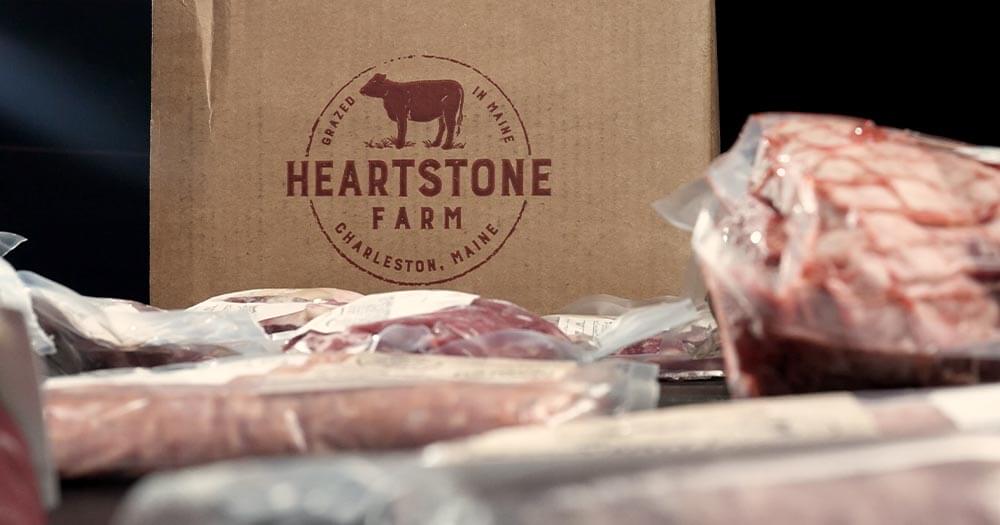
Thawing Your Meat and Seasoning Choices
Before you begin cooking, it’s crucial to thaw your Prime Rib properly. Thaw it in the refrigerator, allowing approximately 24 hours of thawing time for every 5 pounds of meat. This gradual thawing method ensures even cooking and food safety.
When it comes to seasoning, options are nearly limitless. Classic choices like salt and pepper can enhance the natural flavors of the beef, but you can also explore more exotic options like black charcoal rubs. The Internet is a treasure trove of creative seasoning ideas, and you can often find unique rubs and blends on Amazon or specialty stores.
Tools for Precision Cooking
To ensure your Prime Rib is cooked to perfection, consider investing in a meat thermometer. The Meater Block and Meater Plus are excellent choices, offering wireless temperature monitoring and precision control. Other meat thermometers available on Amazon provide reliable results as well. These tools take the guesswork out of cooking, ensuring your Prime Rib reaches the desired internal temperature.
In Conclusion
This holiday season, as you gather with loved ones to savor the delectable flavors of Holiday Prime Rib, remember the importance of supporting small farms like Heart Stone Farm and choosing high-quality, grass-fed and grass-finished beef. This not only benefits your health but also contributes to sustainable agriculture practices.
Explore the various cooking methods, from smoking to roasting, and experiment with different seasoning blends to create a memorable dining experience. Embrace the joy of cooking and the satisfaction of enjoying a delicious meal made with care and attention.
As you embark on your culinary journey, remember that the right tools, such as meat thermometers, can make a significant difference in achieving the perfect cook. So, fire up the grill, preheat the oven, or prepare the smoker, and let the aroma of sizzling Prime Rib fill your holiday gatherings with warmth and delight.
